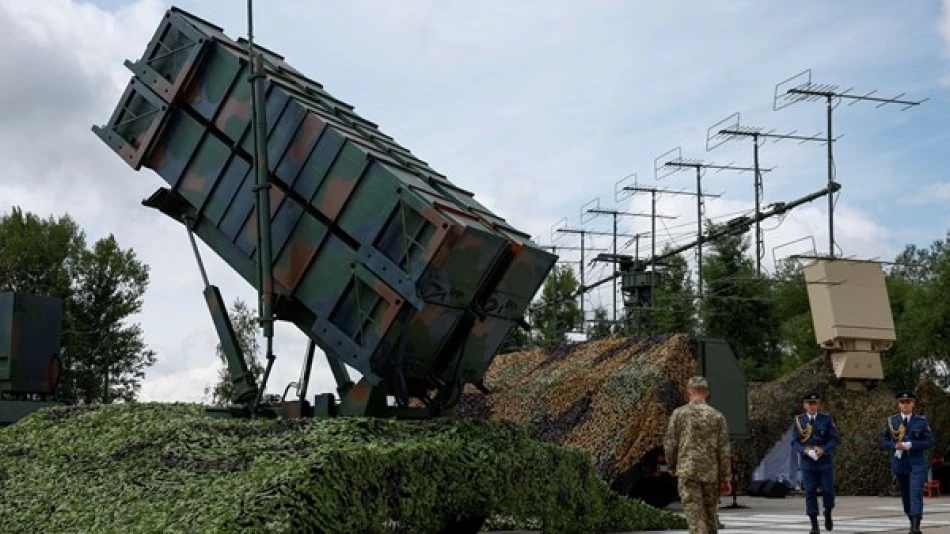
US Approves $322M Arms Sale to Ukraine, Bolstering Defense Capabilities
US Approves $322 Million Arms Package for Ukraine, Bolstering Air Defense and Armored Fleet
The United States has authorized a $322 million weapons sale to Ukraine, marking another significant military aid package as the war-torn nation continues to defend against Russian aggression. The deal focuses on critical defensive capabilities, including air defense systems and armored vehicles that could prove pivotal in Ukraine's ongoing conflict strategy.
Breaking Down the Military Package
The Defense Security Cooperation Agency announced Wednesday that the arms deal consists of two primary components designed to address Ukraine's most pressing battlefield needs. The larger portion allocates $172 million for Hawk air defense systems and their maintenance, while $150 million will fund Bradley Fighting Vehicles and associated support services.
Strategic Focus on Air Defense
The emphasis on Hawk missile systems reflects Ukraine's desperate need for enhanced air defense capabilities. These medium-range surface-to-air missiles, originally developed in the 1960s but continuously upgraded, can engage aircraft and missiles at ranges up to 45 kilometers. For Ukraine, which faces relentless drone and missile attacks on civilian infrastructure, robust air defense has become existential.
The timing is particularly significant as winter approaches—a period when Russia has historically intensified attacks on Ukraine's power grid and heating infrastructure. Enhanced air defense could help protect critical utilities that keep Ukrainian cities functioning during the harsh winter months.
Bradley Vehicles: Proven Combat Assets
The Bradley Fighting Vehicle component represents a continuation of successful military cooperation. These tracked armored vehicles, already deployed by Ukrainian forces, have demonstrated effectiveness in combined arms operations. Unlike tanks, Bradleys can transport infantry while providing fire support, making them invaluable for the type of territorial defense operations Ukraine continues to conduct.
Broader Strategic Implications
This latest package brings total US military aid to Ukraine well beyond $100 billion since Russia's February 2022 invasion. However, the deal's structure—as a direct sale rather than drawdown from US stockpiles—suggests a shift toward longer-term military relationship building rather than emergency assistance.
Market and Defense Industry Impact
For defense contractors, Ukraine's ongoing needs represent sustained revenue streams. Companies like Raytheon, which manufactures Hawk systems, and BAE Systems, involved in Bradley production, benefit from both initial sales and long-term maintenance contracts. This creates a more predictable business environment compared to the volatile nature of emergency aid packages.
The maintenance components of both deals are particularly significant, as they establish enduring relationships between Ukrainian forces and American defense contractors, potentially influencing Ukraine's military procurement decisions for decades.
Comparing Global Military Aid Approaches
Unlike European allies who often provide aid through government-to-government transfers, the US increasingly uses Foreign Military Sales programs that benefit American manufacturers while supporting allies. This approach mirrors successful partnerships with countries like Saudi Arabia and Israel, where initial sales create long-term maintenance and upgrade relationships.
The dual focus on air defense and ground mobility also reflects lessons learned from modern conflicts. Similar combinations have proven effective in other theaters, from Israeli operations against Hamas to Turkish involvement in Syria, where integrated air defense and mobile ground forces provide operational flexibility.
Looking Ahead: Sustainability and Escalation
This arms package signals American confidence in Ukraine's long-term viability as a military partner. By investing in maintenance capabilities alongside hardware, the US is betting that Ukrainian forces will continue operating these systems for years to come. This represents a significant evolution from early war aid focused on immediate survival to longer-term military modernization.
For Ukraine, the challenge will be integrating these capabilities effectively while training personnel to maintain sophisticated American equipment. Success could position Ukraine as a more formidable regional military power, while failure could leave expensive equipment underutilized on the battlefield.
Most Viewed News

 Layla Al Mansoori
Layla Al Mansoori






